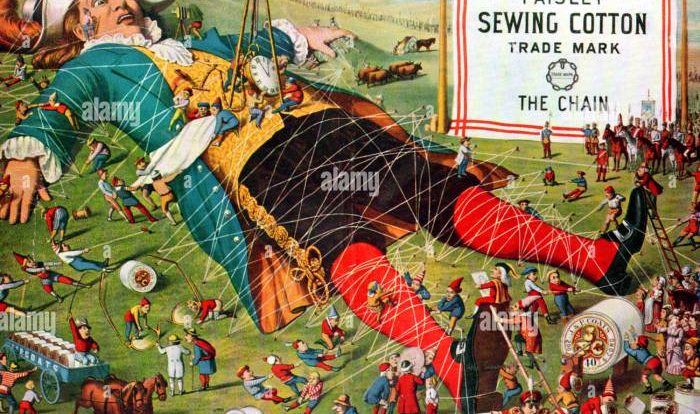Summer of the mariposas chapter 3 – In ‘Summer of the Mariposas’ Chapter 3, the narrative delves deeper into the transformative journey of Esperanza, a young Mexican-American girl, as she navigates the complexities of family, friendship, and her own evolving identity.
Esperanza’s character arc takes center stage, showcasing her growing independence, maturity, and the subtle shifts in her relationships. The chapter’s setting and symbolism, particularly the recurring presence of butterflies (mariposas), play a pivotal role in shaping the narrative and its underlying themes.
Character Development: Summer Of The Mariposas Chapter 3

Chapter 3 of “Summer of the Mariposas” marks a significant turning point in Esperanza’s character development. As she faces new challenges and experiences, her independence and maturity grow.
Changes in Esperanza’s Relationships, Summer of the mariposas chapter 3
- Esperanza’s relationship with her mother becomes strained as she begins to question her authority.
- She develops a close bond with her grandmother, Mamacita, who provides her with guidance and support.
- Her friendship with Josefina strengthens as they share their dreams and aspirations.
Growing Independence and Maturity
- Esperanza stands up to her mother and defends her right to make her own decisions.
- She takes on new responsibilities, such as helping to care for her younger siblings.
- Her experiences in the garden help her develop a sense of self-reliance and determination.
Setting and Symbolism
The setting of Chapter 3 plays a crucial role in shaping the story. The garden, where Esperanza spends much of her time, becomes a symbol of hope and growth.
Significance of the Setting
- The garden provides Esperanza with a sense of escape from her family’s poverty and the constraints of her culture.
- It becomes a place where she can explore her own identity and develop her creativity.
- The garden’s transformation throughout the chapter reflects Esperanza’s own journey of self-discovery.
Use of Symbolism
- The mariposas (butterflies) symbolize freedom, transformation, and the potential for growth.
- The garden’s flowers represent the beauty and diversity of life.
- The weeds symbolize the challenges and obstacles that Esperanza must overcome.
Plot Progression
Chapter 3 introduces several key events that advance the plot and create conflict.
Summary of Key Events
- Esperanza and Josefina plant a garden in their backyard.
- Esperanza’s mother forbids her from spending time in the garden.
- Esperanza defies her mother and continues to tend to the garden.
- Esperanza’s garden becomes a source of pride and joy for her family.
Conflicts and Challenges
- Esperanza’s conflict with her mother over the garden symbolizes her struggle for independence.
- The challenges of growing the garden represent the obstacles that Esperanza must overcome in her life.
- The conflict between Esperanza and her mother foreshadows future tensions in their relationship.
Literary Devices
Chapter 3 employs various literary devices to enhance the storytelling and emotional impact.
Use of Literary Devices
- Foreshadowing: The chapter foreshadows future events, such as the conflict between Esperanza and her mother.
- Imagery: The vivid descriptions of the garden and its flowers create a rich sensory experience for the reader.
- Metaphors: The use of metaphors, such as the garden representing Esperanza’s life, adds depth and symbolism to the story.
Examples of Literary Devices
- Foreshadowing: “Esperanza’s mother’s face hardened, and her eyes narrowed.” This foreshadows the conflict that will arise between them over the garden.
- Imagery: “The garden was a riot of color, with flowers of every hue blooming in profusion.” This vivid description creates a sensory experience for the reader.
- Metaphor: “The garden was Esperanza’s world, her sanctuary, her place of dreams.” This metaphor shows the importance of the garden to Esperanza.
Cultural and Historical Context
Chapter 3 reflects the experiences of Mexican-American immigrants in the United States.
Cultural and Historical Context
- The story is set in a Mexican-American community in California during the 1940s.
- Esperanza’s family struggles with poverty and discrimination.
- The garden becomes a symbol of the family’s hope for a better future.
Relevance to Contemporary Issues
- The chapter’s themes of immigration, cultural identity, and the pursuit of dreams are still relevant today.
- The story can help readers understand the challenges faced by immigrants and the importance of diversity.
- The garden can be seen as a symbol of the resilience and hope of immigrant communities.
Top FAQs
What is the significance of the butterflies in Chapter 3?
The butterflies symbolize Esperanza’s transformation and her connection to her Mexican heritage. They represent freedom, beauty, and the hope for a better future.
How does Esperanza’s relationship with her family change in this chapter?
Esperanza begins to assert her independence and question her parents’ authority. She also develops a closer bond with her grandmother, who shares her cultural wisdom and traditions.
What is the main conflict Esperanza faces in Chapter 3?
Esperanza struggles with her desire for independence and her sense of obligation to her family. She also faces challenges related to her Mexican-American identity and the prejudice she encounters.

